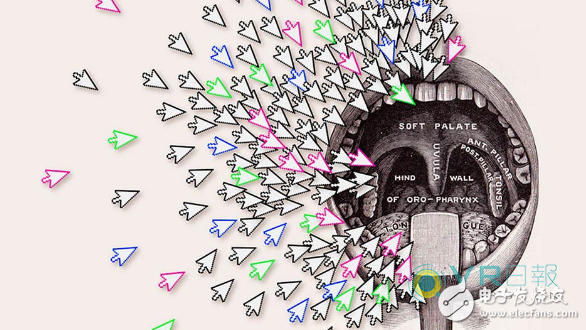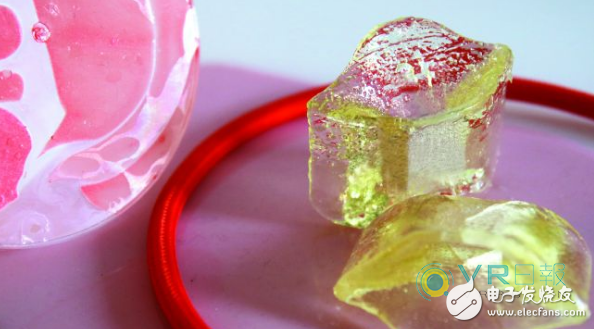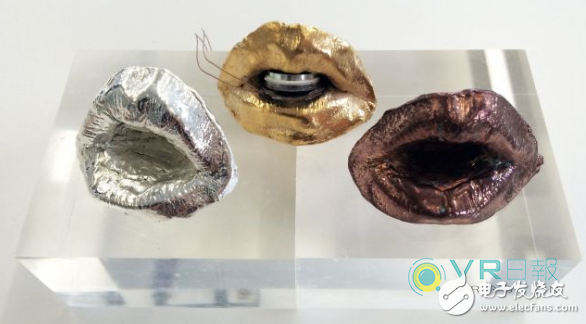Most of us believe that it is a matter of course to use the hands and fingers to manipulate technology and manipulate the world around us. From turning on the TV to communicating via WeChat to the game, we subconsciously accomplish tasks with our fingers and touch.
But what if we also use other parts of the body for control? For example, your mouth or tongue, or even your taste? This is a question raised by designer, researcher and UI developer Francesca Perona, Perona and Her team is exploring the potential of our mouth, and the results may be even bigger than we think.
Exploring the mouth
Entrusted by Science Gallery London, as part of “Mouthy: Into the Orificeâ€, Perona's latest project is called “Mouth CTRLerâ€. This is essentially a prosthetic device that is embedded in your mouth and used to communicate with other technologies, interact with games and other applications.

To understand how the device works and how it works, TechRadar interviewed Perona recently and asked why she and her team decided to focus on putting their mouths first.
She said: "The mouth is a complex space, the actual interface between the body and the outside world. This is the channel that leads us to be more instinctive, more subtle and more immersive. The sense of smell, taste and touch come together in this space. â€

As Perona said, our mouth is much smarter than we think. She added: "We found out through the study of oral function that the tongue can distinguish more than 25 food characteristics, including density, dryness to viscosity, etc. Basically, this is the third hand."
After much research, Perona and her team realized that the potential to combine oral perception with prosthetics and technology can be enormous.
2. Design experience for the mouth
We are eager to understand how researchers began designing prosthetics in such a small and relatively unknown technical space. Perona tells us: "In our thinking process, we draw all the active and passive parts of the mouth in the initial stages of the project. Teeth, lips, tongue and cockroaches, etc. Then we map the potential 'digital action' to These spaces, and perform functions such as navigation, press, click, open, and close."
The final piece of the puzzle is to find out which sensors are most effective in presenting specific results, and placing these sensors in our mouth presents a unique challenge. Perona added: “Because it (the mouth) is a very humid space, the sensor must be well packaged and the entire device needs to be produced in accordance with the food safety certificate.

In addition, all the mouths are very different. We are constantly exploring and designing prototypes for controllers, but we can't find a universal shape that fits everyone's, which is why we focus on sensors that can be actuated by tooth pressure. â€
3. “Taste†the sound and listen to the “tasteâ€
Mouth CTRLer is designed to perform a variety of tasks. We see people playing a table tennis game in the demo, and the team is working hard to incorporate hearing and taste into a project called "The Taste of Music."
Perona said that cross-modal scientists have been exploring ways in which our senses can interact with each other for a long time, especially taste and sound. But her project aims to show how it works in a fun and easy-to-understand way. Answer? Lollipop.
The team used pure tastants to make lollipops (the stimulants stimulate our taste) to reduce people's attention to smell and vision. Perona explained: "The lollipop-shaped design is suitable for a variety of oral cavity and can be directly inserted into a bone conduction sensor."
“The lollipop shape also helps to transmit sound vibrations from the bone conduction device to the widest possible surface of the lips and teeth. Just tap the lollipop or put your lips on it, the experimenter can hear in the mouth The sound will also feel the release of the tastant."

Then, the team invited Dr. Shama Rahman (she is also a professional actor and musician) who specializes in neuroscience related to music creativity to work together to study the five sweet, sour, salty, bitter and umami flavors. Basic qualities to enhance or regulate the perception of taste and hearing.
Although this may sound like a very esoteric field, Perona explained that this is becoming a key topic for researchers like her, she said: "Advances in taste stimulation and multi-sensory mapping technology are driving more and more people. Use taste in interactive apps and experiences."
4. The role of the mouth in assistive technology
This way of thinking about breaking through the routine has played an important role in the development of assistive technology for many years. Charities such as Able Gamers and Special Effects have been lobbying the technology community for such technology in the past.
We asked how Perona sees the potential of Mouth CTRLer to help people with disabilities or those with physical disabilities interact with technology. She replied: "There is definitely a great opportunity in this area, and a lot of research is already going on."
“For example, QuadsTIck integrates four Sip-n-Puff (SNP) switches, a lip sensor, and a joystick. This is completely customizable, with 41 combinations (different motions and sensors) available. However, we are The forum found that users complained about the difficulty of customizing devices, while others turned up the video to help them configure it, which of course requires a bit of programming knowledge."

The reason for using the mouth to design these assistive techniques is because the tongue is a very important muscle. Perona said: "The tongue is one of the strongest muscles in our body. This is one of the few muscles that only have one side connected to the body and still function properly after spinal cord injury."
Teams like Tongue Drive are designing specialized techniques for muscles, and Perona thinks this is not surprising. The Tongue Driv is a prosthetic device that attaches to the tongue using a magnet, allowing people to move their tongues and then convert the navigation information into a digital interface and physical space, such as a navigation wheelchair.
There are still many challenges to Perona's development of better technology. The Sip-n-Puff system and QuadsTIck have been launched, and the Tongue Drive system is still in development.
“The equipment on the market is still huge, mainly external,†Perona added. “And they are not very intuitive.â€
5. The future of mouth technology
Perona was originally inspired by the idea of ​​creating better assistive technologies for people with disabilities and physical disabilities, and she now believes that using the mouth to interact with technology has great potential and can be used in a wider range of applications.
In order to spread her mind, she and her team held a seminar to think about the function of the mouth, as well as its cultural, social, aesthetic and emotional values.
Perona added: “Although disability-related applications are at the heart of our discussions, we have also explored areas such as sensory enhancement, personalized healthcare, improved learning, personal safety, training and distance communication.â€

She believes there is huge potential when it comes to healthcare, using biosensors to monitor personal health and providing feedback through sound. But it is also possible to integrate oral prosthetics into other new technologies, such as virtual reality.
She also said: "We also believe that with the development of VR, the gaming experience will become more "tactile" to the public. There have been jumpsuits connected to vibration motors to provide tactile feedback to different parts of the body."
Whether you think Perona's research is fascinating or too mysterious, you can't deny that from large technology companies and assistive technology start-ups to food researchers, everyone can benefit from creative thinking and learn more about our magical mouth.
KNM6 Series Moulded Case Circuit Breaker
KNM6 series Moulded Case Circuit Breaker is MCCB , How to select good Molded Case Circuit Breaker suppliers? Korlen electric is your first choice. All moulded Case Circuit Breakers pass the CE.CB.SEMKO.SIRIM etc. Certificates.
Moulded Case Circuit Breaker /MCCB can be used to distribute electric power and protect power equipment against overload and short-current, and can change the circuit and start motor infrequently. The application of Moulded Case Circuit Breaker /MCCB is industrial.
Korlen electric also provide Miniature Circuit Breaker /MCB. Residual Current Circuit Breaker /RCCB. RCBO. Led light and so on .
KNM6 series Molded Case Circuit Breaker,Small Size Molded Case Circuit Breaker,Electrical Molded Case Circuit Breaker,Automatic Molded Case Circuit Breaker
Wenzhou Korlen Electric Appliances Co., Ltd. , https://www.korlenelectric.com